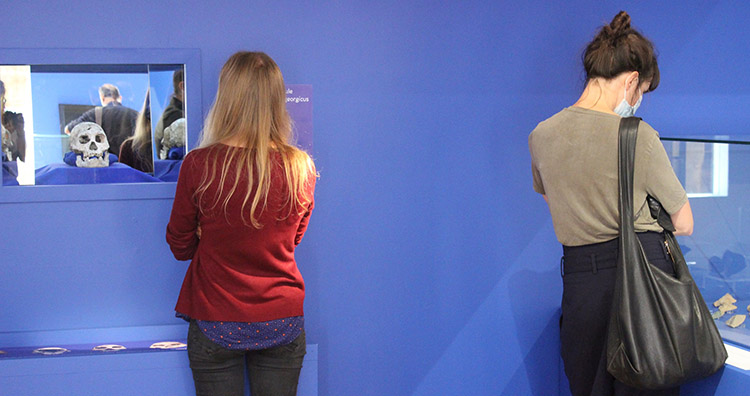France's National Museum of Prehistory hosting Dmanisi remains in stone cutting display

Located in France's south-west, the National Museum of Prehistory has been hosting viewers for the exhibition since July. Photo via Georgian National Museum.
Ancient human remains and tools unearthed in historic findings at southern Georgia's Dmanisi site are on display at the National Museum of Prehistory in France, with the exhibition tracing the history of stone cutting "from Africa to the doors of Europe".
Fragments of a skull, stone tools and remains of animals - all excavated in Dmanisi in recent decades and preserved by the Georgian National Museum - have been introduced to visitors of the French venue, located in southwestern France's Dordogne department, since July.
They are displayed alongside findings from the African continent, with the complete exhibition aiming to illustrate the evolution of the development of stone cutting and tools made from the material over the past two million years.
The first evidence of an exit from the African cradle, now proven to be around 1.8 - 1.7 million years ago, is the work of a perfectly bipedal man, Homo ergaster, equipped with technical equipment described as Oldowayen. At the gates of Europe, the Georgian site of Dmanissi brings together spectacular anthropological remains and tools
- National Museum of Prehistory summary for the display
The earliest exhibit at the display has been dated back 3.3 million years by historians, while the Dmanisi artefacts highlight the site's major status for anthropological, paleontological and archaeological significance.
Organisers said it was intended to follow the timeline that started with the ancient ancestors of humans making simple shapes from stones, to the works produced by the shaping, and the latter-stage technological innovations.
Curated by Jean-Jacques Cleyet-Merle, Honorary General Curator of the venue, the display has been brought together by the Grand-Palais Union of National Museums of France, the National Museum of Prehistory, National Museums of Kenya and Georgian National Museum.
The exhibition Homo Faber will be open for visitors at the museum through November 29.
 Tweet
Tweet  Share
Share